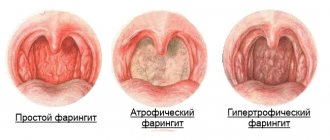In a general sense, pneumonia (also known as pneumonia) is defined in medical science and practice as damage to the pulmonary structures (parenchyma) involving the lower respiratory tract (pleura, bronchi, etc.) in the pathological process.
In extremely rare cases, an allergic, autoimmune, or congestive process occurs, which is most common among bedridden patients.
A common case is the occurrence of infectious-inflammatory pneumonia, provoked by pneumococci, other microorganisms and even viruses.
In all cases, pneumonia is potentially fatal, especially its interstitial forms.
As already noted, pneumonia is most often provoked by bacteria: pneumococci, staphylococci, streptococci and other structures. However, another situation is also possible, when the disease is caused by atypical flora.
One of the typical representatives of “non-traditional” microorganisms is Klebsiella. It provokes sluggish generalized forms of pneumonia and occurs in approximately 25% of clinical situations.
Reasons for the development of the disease
All factors causing inflammation of the pulmonary structures are divided into two categories. The first concerns the invasion of the body by pathogenic flora. Klebsiella itself is inhomogeneous: it is a heterogeneous flora, including more than 5 species. The second category concerns a decrease in the activity of the immune system for various reasons. It is necessary to understand the issue in more detail.
What is a pathogen
The main causative agent of Klebsiella lung disease, as is considered in wide medical circles, is Klebsiella pneumoniae (Klebsiella pneumonia), which is also called Friedlander's bacillus after the discoverer of the bacterium.
We are talking about an atypical form of pneumonia. Friedlander's wand causes generalized damage to the main systems of the body. As a rule, in addition to inflammation of the pulmonary structures, the bladder, kidneys, and intestines are involved in the pathological process. Accordingly, secondary urethritis, nephritis, pyelonephritis, acute colitis and various types occur.
Klebsiella Friedlander itself is not a pathogenic microorganism. It is opportunistic, lives in the colon of every person, and makes itself felt only if the body’s defenses are reduced. In order for a generalized defeat to begin, a number of factors must coincide.
Paradoxically, Friedlander's gram-negative bacillus, according to the medical literature, causes pneumonia much less frequently than its other “brothers.”
We can talk about the following types of Klebsiella, in addition to Klebsiella pneumoniae:
- Klebsiella oxytoca. Klebsiella oxytoca is a species of gram-negative bacterium of the genus Klebsiella. It provokes sluggish inflammatory processes in the pulmonary structures, often accompanied by meningitis and colitis of varying intensity. The development of secondary damage to the upper respiratory tract (nasopharynx as a whole) is possible.
- Klebsiella ozaenae. Most often it settles in the nasal passages, causing the so-called ozena or foul runny nose. Descending into the lower respiratory tract, Abel's bacillus (the second name of this bacterium) causes isolated inflammatory processes in the lungs and bronchi.
- Klebsiella rhinoscleromatis. Provokes acute and life-threatening forms of pneumonia. As a rule, we are talking about generalized lesions, as in the case of Friedlander's wand.
There are other types of Klebsiella. Several factors make them similar:
- for the most part, these are anaerobic bacteria that can live in an oxygen environment;
- they are gram-negative and extremely resistant (resistant, difficult to respond) to therapy;
- we are talking about highly virulent microorganisms, which determines their wide distribution;
- belong to the opportunistic flora.
As a rule, most cases of infection occur in maternity hospitals and the first years of life. Klebsiella is a nosocomial infection. In all cases, urgent treatment is required.
Main routes of infection
As already noted, Klebsiella is a highly virulent and highly contagious infectious structure that can infect the body of a potential carrier in several ways. The most common are:
- airborne route. It is most common among the adult population and primary school and preschool age. Klebsiella pneumonia develops as a result of the downward penetration of bacteria into the body. Klebsiella enters the environment with particles of mucus and saliva. Thus, to become the “lucky owner” of a wand, it is enough to breathe the same air as the infected person;
- contact and household path. Common among younger patients. Especially often we are talking about contact with infected medical personnel in a maternity hospital;
- sexual tract. Distributed among male and female populations equally. Sexual contacts, especially oral-genital ones, are dangerous for the health of the pulmonary structures, no matter how paradoxical it may sound;
- descending path. We have to talk about the spread of infection from mother to fetus as the latter passes through the birth canal. Since everyone is infected, the risk of secondary infection is almost one hundred percent;
- perinatal route. From the expectant mother to the fetus through the placenta. Klebsiella is relatively easily transported across the placental barrier;
- through blood transfusion. It is extremely rare, but similar things do happen.
It should be noted that Klebsiella pneumonia is common among the pediatric population, and is especially common in younger infants. Bacterial flora is transported throughout the body through the blood or lymphatic fluid.
Signs of other types of Klebsiella
In addition to the bacterium that causes pneumonia, there are a number of other species that are no less complex both in their symptoms and in treatment.
Damage to the upper and middle respiratory tract.
Rhinoscleroma/Frisch stick, caused by the microorganism Klebsiella rhinoscleromatis. The disease spreads to the upper and middle respiratory tract and has its own symptoms:
- swelling of the upper respiratory tract (in this case, nasal congestion);
- purulent discharge with bloody streaks;
- unpleasant odor;
- low-grade fever or high.
In the absence of proper treatment, the smell intensifies, a so-called “fetid runny nose and breath” appears, the mucous membrane of the nose, as well as the bones, atrophies, crusts and nodules grow in the cavity, closing the respiratory tract.
A disease of the trachea and nasopharynx caused by Klebsiella ozaenae. During the infection process, a dry cough is formed, separating purulent mucus, with an unpleasant odor from the mouth and, again, a putrid runny nose.
Accompanied by the following symptoms:
- swelling of the larynx, nasal congestion;
- purulent discharge during a cough or runny nose, streaked with blood;
- unpleasant odor during discharge;
- low-grade or high fever.
Klebsiella of this type is sown in a throat smear, and, accordingly, is also sensitive to antibiotics.
Defeat of housing and communal services
The provocative stimulus is Klebsiella ppneumoniae (sometimes oxytoca), localization - the gastrointestinal tract or the stomach itself. Often the microbe causes acute gastritis and even ulcers. At the first stage (3-4 days) it is accompanied by mild symptoms:
- nausea;
- stomach pain;
- heartburn;
- lack of appetite.
In a more advanced situation, when the infection affects the entire large and small intestines, the symptoms intensify:
- vomit;
- sharp, cramping pain;
- diarrhea, often accompanied by mucous and bloody discharge;
- foul odor.
The acute period lasts from 3 to 6 days. A competent approach from a doctor will cure the disease. In this case, the prescription will include not only antibiotics, but also probiotics.
Damage to the genitourinary system
Klebsiella also has a detrimental effect on the genitourinary system. It will be impossible to diagnose the disease at home, since the symptoms are quite similar to diseases caused by other microorganisms.
Symptoms:
- cystitis/prostatitis;
- pyelonephritis;
- pain in the lower abdomen;
- bloody or purulent discharge during urination;
- temperature;
- smell.
If a microbe is detected in the urine, antibacterial treatment will also be prescribed.
Sepsis due to Klebsiella
Sepsis is a blood poisoning caused by Klebsiella infection. Typically, this stage is reached by patients with weakened immune systems, those already infected with any other disease, or infants in poor health. The reason, as mentioned above, is the endotoxin released during destruction. In parallel, damage occurs to other working systems of the body: kidneys, liver, lungs, cardiovascular system. It is very, very problematic to cure such patients.
The mechanism of pathology development
Klebsiella pneumonia develops in the same way as other forms of bacterial, infectious pneumonia. There are no fundamental differences:
- one of the ways microorganisms penetrate the patient’s body;
- in a lymphogenous, hematogenous or descending manner, Klebsiella “gets” to the pulmonary structures;
- There, the gram-negative rod settles in the area of the parenchyma cells of the lungs and bronchi and begins to multiply intensively;
- The immune system reacts to the pathogenic structure, sending a large number of leukocytes, lymphocytes and other protective cells to the site of the lesion;
- The process of inflammation is initiated.
During the fight against pathogenic flora, a certain amount of pus is formed: a mixture of cellular fluid, dead leukocytes and Klebsiella. The exudate leaves with sputum and looks like a yellowish or greenish thick liquid.
Thus, the process of infection and the onset of pathology goes through several stages.
General information about the pathogen
The bacterium Klebsiella pneumoniae was first discovered in a patient with pneumonia, which is why it got its name. This rod can be found both in the body of an infant and an adult. It lives on the surface of the skin, in the mucous membranes, it can be found in feces, in a smear from the cervical canal in women. But most often the pathogen acquires a pathogenic character precisely in the respiratory organs.
If the pathogen Klebsiella pneumonia is not identified during the treatment of pneumonia, then the therapy will not be effective. If the disease is not treated, dire consequences are possible:
- Lung abscess
- Liver damage with the formation of ulcers
- Purulent formations in bone tissue
- The appearance of pus on the lining of the brain
Important! If Klebsiella pneumonia actively develops in the body of a newborn, his life is in danger.
Symptoms and features of the course
The symptoms of Klebsiella pneumonia are extensive. This means that manifestations from several organs and systems are observed at once. This is considered the main feature of the course of this form of the disease.
The symptoms are, in general, very characteristic. In the first few days, a clear picture of damage to the pulmonary structures is observed:
- chest pain. Caused directly by pneumonia itself and cough. Intensifies when inhaling, exhaling, touching the back and chest;
- dyspnea. Increasing the number of breathing movements per minute. It is caused by increasing swelling of the pulmonary structures and bronchial tree (obstruction). Shortness of breath is observed even in a state of complete rest. This is how the body tries to compensate for the lack of oxygen;
- suffocation. Inability to achieve optimal inhalation or exhalation. Caused by intense obstruction of bronchial structures. The condition requires urgent medical correction, otherwise asphyxia and death are possible;
- cough. Productive from the very first days, with the release of a large amount of sputum. When coughing, pain in the chest increases;
- increased body temperature (hyperthermia) up to 38 degrees or more. In the first days, only a slight increase in thermometer readings or its normal values is possible;
- symptoms of general intoxication of the body with headache, dizziness, nausea, vomiting, weakness, drowsiness.
Symptoms from other systems are also observed.
Among them:
- vomit;
- diarrhea;
- stomach ache;
- difficulty urinating;
- pollakiuria (frequent false urge to visit the toilet);
- tenesmus;
- polyuria;
- pain in the genital area;
- heart pain and others.
Klebsiella pneumonia, symptoms
As stated above, Klebsiella pneumoniae is the most common infection. Signs of infection will not take long to appear. The incubation period of inflammation will depend on the general condition of the person, the stability of his immunity, as well as on the type of bacilli.
Klebsiella pneumonia
Klebsiella pneumonia is caused by a microorganism called Klebsiella pneumoniae. During the infection process, the lungs are filled with a large number of inflammatory foci, which can be located either independently or merge together.
The bacterium Klebsiella pneumonia gives certain symptoms:
- there is an increase in temperature;
- general intoxication with all that it implies: nausea, diarrhea, vomiting, dehydration, weakness;
- dry cough, purulent/bloody sputum;
- bad breath;
- shortness of breath, heaviness in the chest, wheezing.
Unfortunately, the mortality rate with such an infection is high, but Klebsiella pneumonia is afraid of timely intervention. Early treatment can change the course of the disease. Treatment in adults is more effective than in the weakened category of people mentioned above.
A provocative moment for the klebsiella pneumoniae bacillus will be a test value of 10 to 6 degrees. This happens in cases where normal hygiene standards are not observed or when there is close contact with a person. But in the case when the test indicators are 10 to 5 degrees and below, it will be much more difficult to determine infection than with higher indicators.
In infants, values such as 10 to 7 must be urgently eliminated through antibiotics. Thanks to the antibiotic sensitivity of Klebsiella, this is possible today, but it should be remembered that test results of grade 7 are infinitely life-threatening and measures should be taken with lightning speed. It is possible to treat a patient who has been struck by a Klebsiella infection, and even with such indicators, only with the most complex “cocktails” of various drugs: antibacterial, antiviral therapy, etc.
Signs of damage to the nasopharynx and upper respiratory tract
Another group of symptoms, however, does not always occur. The following manifestations are possible:
- runny nose;
- pain in the maxillary sinuses when bending over or trying to blow your nose;
- discharge of mucus from the nose;
- sore throat;
- discharge of pus from lacunae;
- formation of purulent plugs in the tonsils;
- secondary conjunctivitis.
In particularly difficult cases, the entire “palette” of the described symptoms may occur at once. This condition is called generalized klebsiellosis and occurs more often in infants and people with weakened immune systems.
Diagnostics
Consultation with a pulmonologist and infectious disease specialist is required. These specialists work in tandem and help cope with the disease. During the initial appointment, an oral interview and medical history are taken.
The following studies are required in the future:
- Sputum analysis, including inoculation of biomaterial on nutrient media.
- Nasopharyngeal smear (Klebsiella pneumonia is often observed in the smear).
- General urinalysis (Klebsiella pneumonia in the urine and other forms of rods of this type).
- Analysis of stool for coprogram (Klebsiella pneumonia in stool).
- PCR diagnostics.
- ELISA study.
- X-ray of the chest organs.
- Ultrasound of the abdominal cavity and kidneys.
- Urine according to Nechiporenko, Zimnitsky.
There is enough research data in the complex.
Etiology and pathogenesis
The cause of klebsiellosis is a small, immobile, gram-negative rod, located singly, in pairs or in chains in a smear. Klebsiella is not demanding on nutrient media. Like most enterobacteria, they use glucose and citrate as an energy source. On sweaty nutrient media they form large, slimy colonies.
Klebsiella is a facultative anaerobe that forms a capsule that makes the bacteria resistant to environmental factors. They die during prolonged boiling or as a result of exposure to conventional disinfectants. This bacterium is resistant to many antibacterial drugs, which makes the treatment of Klebsiella difficult.
The pathogenicity factors of Klebsiella are:
- Capsular polysaccharide,
- They drank
- Outer membrane protein
- Endotoxin,
- Heat-stable enterotoxin,
- Hemolytic membrane toxin.
They ensure adhesion (sticking) of bacteria on the mucous membrane, their reproduction and colonization. The capsule protects the microbe from phagocytes. Endotoxin is a lipopolysaccharide that is released after the destruction of a microbial cell and causes symptoms of intoxication in the patient.
- With Klebsiella pneumonia, many foci form in the lung, which merge over time, the affected tissue becomes mucus and contains a large number of microbes. Severe pathology often ends in infection of internal organs or the development of sepsis.
- K. rhinoscleromatis causes rhinoscleroma , which is a granulomatous inflammation of the nasal and nasopharyngeal mucosa with the formation of constantly thickening specific nodes.
- Ozena is a pathology caused by K. ozenae , in which the mucous membrane of the nose and paranasal sinuses becomes inflamed, the nasal turbinates atrophy, and a foul-smelling secretion is released.
Features of treatment
During therapy, not only a number of traditional drugs are used (such as antibiotics, anti-inflammatory, antipyretic and other drugs), but also bacteriophages.
The treatment uses the polyvalent, purified Klebsiella bacteriophage. This is a neutralized strain of bacteria: Klebsiella pneumoniae, Klebsiella ozaenae and Klebsiella rhinoscleromatis.
The size of bacteriophages is so small (a non-cellular life form is 100 times smaller than a bacterium) that it allows them to penetrate directly into bacterial cells, destroying them.
The bacteriophage is used as an effective and safe replacement for antibiotics (it acts only against Klebsiella, without affecting the body’s cells), without side effects or contraindications (except for hypersensitivity to the components of the drug) and can be used from birth.






